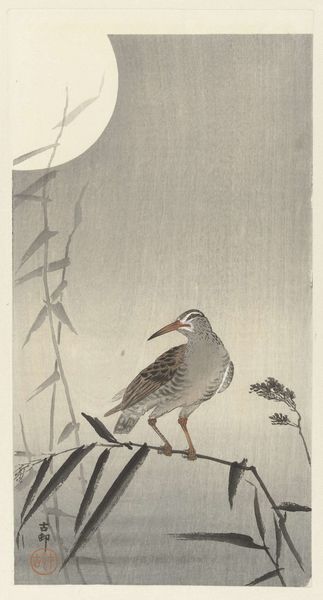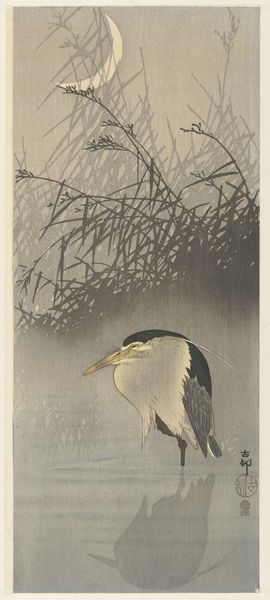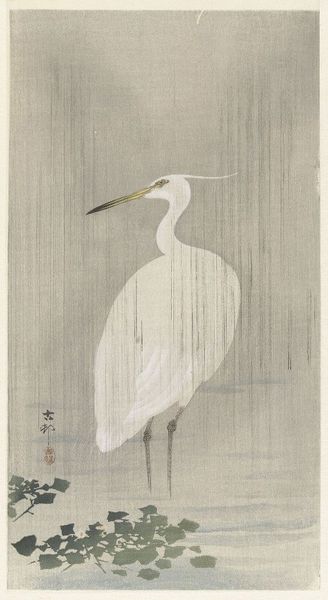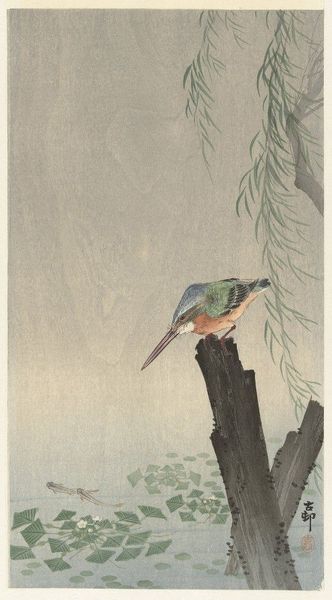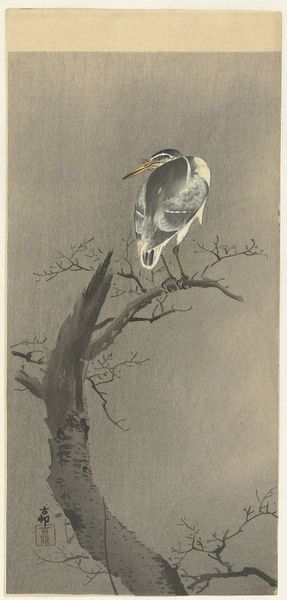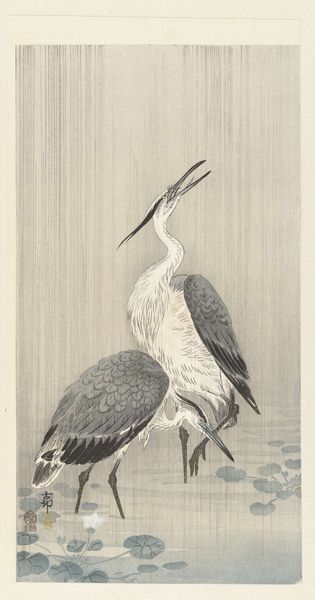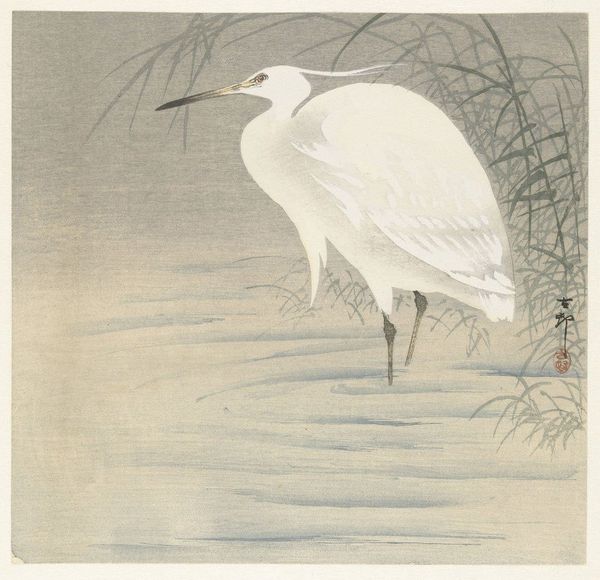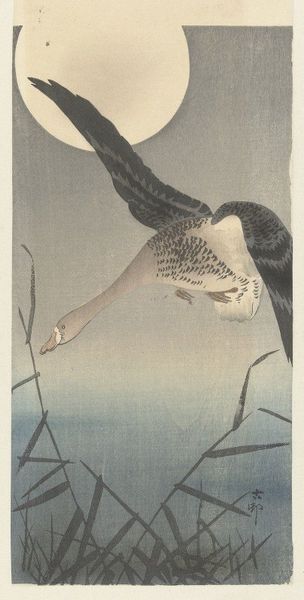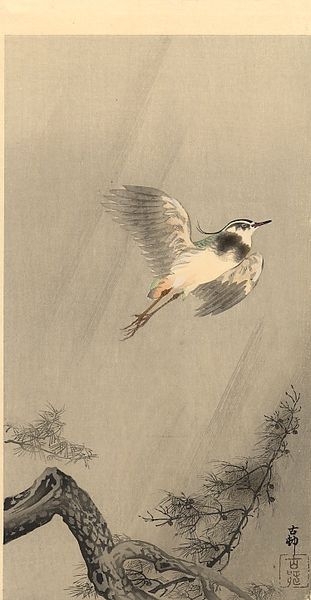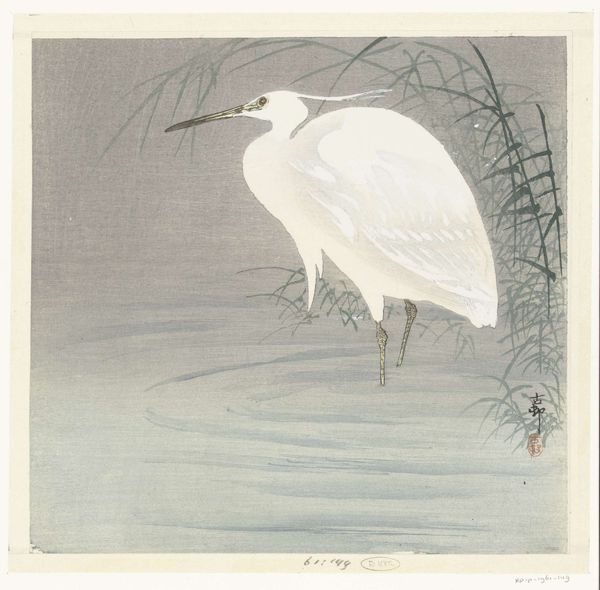
Dimensions: height 369 mm, width 190 mm
Copyright: Rijks Museum: Open Domain
Curator: Here we have "Kwak in Regen," or "Heron in Rain," a woodblock print by Ohara Koson, dating roughly from 1900 to 1936. It’s currently held here at the Rijksmuseum. Editor: Immediately I feel this… quiet solitude. The limited palette of grays and blacks really emphasizes the dreariness of a rain shower, and yet, there's this composed stillness in the heron. What strikes you most? Curator: Its masterful use of line, definitely. The economy of means! With a few simple cuts, Koson captures the texture of rain, the ripple of water, the almost fluffy texture of the heron's feathers. Editor: The production itself, of course, relies heavily on those woodblocks. Each tone, each texture requiring separate blocks carved meticulously, layered carefully. Consider the labor! And this for a print – inherently designed for wider consumption than a unique painting. It challenges that rigid art/craft divide, doesn’t it? Curator: Absolutely, and that’s essential to ukiyo-e, or "pictures of the floating world." It captures fleeting moments, accessible to many. Here, a seemingly unremarkable rainy day is rendered sublime. Doesn’t it remind you of how beauty can be found even in melancholy? I see such gentle acceptance of transience here, a reflection of the natural world's cyclical patterns. Editor: Thinking materially though, this print served a purpose. Mass production also means it traveled! How many hands did it pass through, in how many homes did it find itself? We can only speculate about its consumption within various levels of society. I keep considering the life-cycle of this object. Curator: Right! You can almost imagine this print bringing a small, affordable bit of beauty into the lives of everyday people. This little slice of meditative tranquility is so touching. I appreciate how Koson brings the wild to urban life. Editor: Its quiet stoicism does create such an amazing calming sensation. Looking closer reveals even more nuance within the composition, I find. I have found new perspective on the material implications that reflect even further on it. Curator: Me too. Koson allows us a quiet, reflective space to observe something remarkable from within something ordinary.
Comments
No comments
Be the first to comment and join the conversation on the ultimate creative platform.
